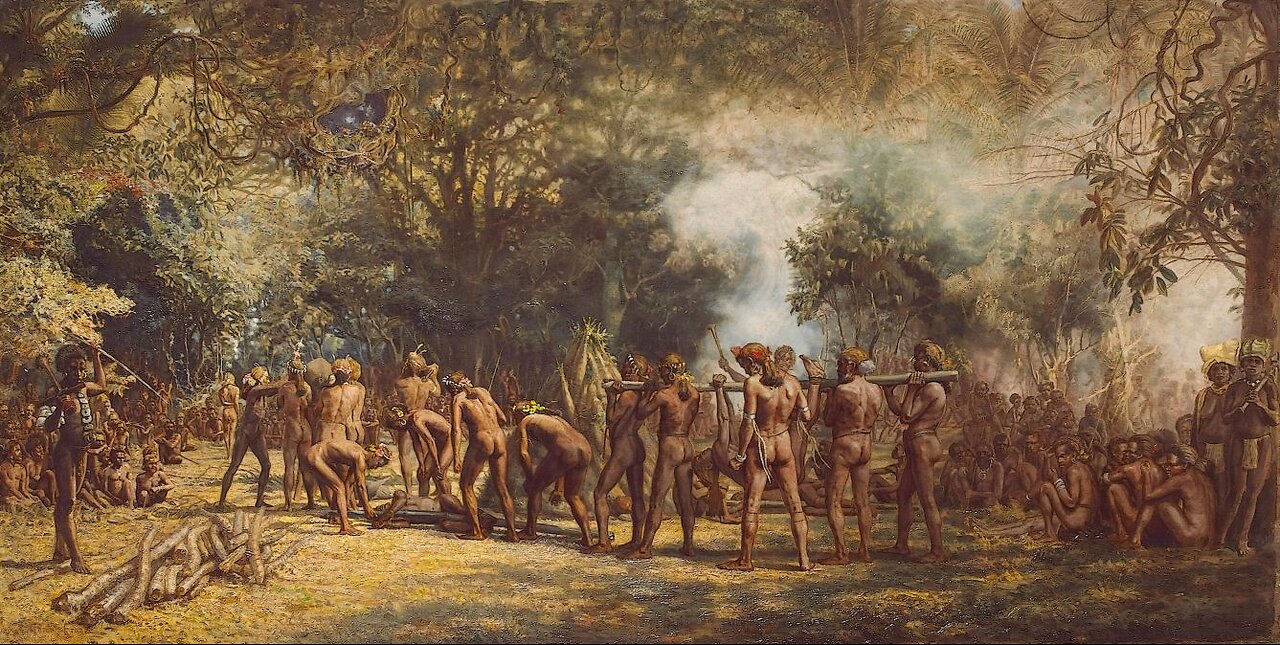Premium Only Content

"Symposium of the Gorgon" by Clark Ashton Smith
Dive Bouteille: the world's largest annual wine expo in France. But in this story he starts out in New York, so it's not that. Probably just your every day bar crawl. Well, hopefully you don't do it every day, if so then get help!
Thomas Bulfinch: American author of the mid-19th century, best known for "Bulfinch's Mythology"
Euripides was a Greek tragedian of the 5th century BC
For those of us who grew up with D&D and didn't have a good prior knowledge of Greek mythology, the equivalence of Medusa and Gorgon may seem strange, but Medusa and her sisters were indeed called Gorgons by the Greeks.
It may also be odd to think of Pegasus as a given name for a winged horse, and not as a generic name for all winged horses, but in the mythology it is indeed the proper name for one specific individual winged horse.
vinous: resembling or associated with wine
Captain James Cook undertook his first Pacific exploration in 1768
anthropophagi: cannibals
Polynesia languages are not so much many-vowelled as they are consonant poor. Hawaiian, for example, has all 5 vowels, but only 8 consonants. When you have fewer letters, each of the letters has to do more work, including the vowels.
I've actually eaten breadfruit! More than 20 years ago I took a vacation to Guam and picked up a cookbook that included breadfruit recipes. Then 10 or 12 years ago a nearby farmer's market happened to get in a load of breadfruit, for some reason. I bought up a bunch as I knew it was going to be the one and only chance I would ever get to give those breadfruit recipes a try. I was not impressed. I'm a decent enough cook, but breadfruit is just not a particularly good food item. It's rather a survival item. On many a Japanese-occupied Pacific Island in WW2 it was eaten by the natives when there was nothing else left to eat, and it kept them alive, but that's about it.
Pandanus trees are found from Madagascar to Hawaii to New Zealand. But are most common in Polynesia and Micronesia.
Breadfruit is native to New Guinea, the Philippines, and the Moluccas, although it was spread by the various peoples who populated all the other Pacific Islands over the centuries, so can be found pretty much everywhere in the Pacific.
As to Chinese exploration of the Pacific, there was a guy in the 3rd century BC who made two expeditions into the Pacific, of which only one we have any record of, as he never returned from the second. China's actual big push into the Pacific was by Zheng He in the first half of the 15th century. But He didn't go very far eastward, hitting the Philippines, down to Borneo, Sumatra, and Java, but that's about it. To the extent the Chinese explored the Pacific, it was south and west, for the trade with India and the Middle East.
Cannibalism among Pacific islanders was reportedly widespread according to early European explorers.
So between the known extent of Chinese activity in the Pacific, and the range of Pandanus and Breadfruit, cannibalism not being much of a limiting factor, we are left with a likely location somewhere in the Philippines or Indonesia. Tons of tiny islands throughout both countries that could fit the bill.
We do have the problem that guava is native to the Americas and would not be grown on Pacific Islands until after the Europeans came along, so that doesn't fit. We'll chalk that up to the author not having done his homework. Taro and pigs are fine, they appear pretty much everywhere from the earliest times, and of course coconuts are no issue either.
As to time frame, we are likely looking at something from the mid-15th century up to the mid-18th century. That's a 300 year window, but it's something.
The picture used is "Cannibal feast on the Island of Tanna, New Hebrides" by Charles E. Gordon Frazer
To follow along: http://www.eldritchdark.com/writings/short-stories/206/symposium-of-the-gorgon
Oh look, I found a map of the extent of cannibalism in the 19th century! Let's see how I did... in the South Pacific we find the regular practice of cannibalism to be mostly in and around New Guinea and Australia and surrounding islands. It occurs on a limited basis pretty much everywhere in the Pacific, but the ones named are where it was most common. Well, that would suggest the story takes place a good bit further east of where I would have placed it, east of New Guinea even, maybe the Solomons or the Bismarck archipelago. Seems unlikely any early Chinese sailors would have wound up there, storm-blown or not. The more likely explanation is that he wound up someplace in Indonesia where it was an infrequent and ritualistic practice. They did, after all, bother to fatten him up first, with no hints that they were eating anybody else in the meantime, so that sounds like a more ritualistic practice and not so much everyday cannibalism, so it can still work with the data point I now have.
-
 LIVE
LIVE
The Quartering
1 hour agoZelensky Comes CRAWLING BACK, Fed Ex Jet BURSTS Into Flames, Elon's Psycho Ex & More
4,308 watching -
 6:49
6:49
Russell Brand
20 hours ago"HE'S A RUSSIAN PLANT!" CNN Loses It ON AIR!
78K98 -
 13:10
13:10
The Rubin Report
21 hours agoWhy the Real Challenge Is Just Beginning | Jordan Peterson
27.7K8 -
 1:02:55
1:02:55
Tactical Advisor
2 hours agoBuilding a Truck Gun -Battle Hawk Build of the Month | Vault Room Live Stream 017
13.2K -
 42:41
42:41
Athlete & Artist Show
1 hour agoSeason 5 Episode 3 LIVE
23 -
 LIVE
LIVE
I_Came_With_Fire_Podcast
9 hours agoThe US GOVERNMENT is PLANNING a UAP FALSE FLAG ATTACK
313 watching -
 18:10
18:10
Sideserf Cake Studio
3 hours agoIs This the ULTIMATE Cake Smashing Moment?
246 -
 12:51
12:51
Misha Petrov
16 hours agoTrump KICKS OUT Zelenskyy After HEATED White House Meeting!
2.1K44 -
 16:39
16:39
Tactical Considerations
1 day ago $0.09 earnedWatchtower Apache Double Stack 1911 Made Me Question Everything?
203 -
 16:20
16:20
T-SPLY
4 hours agoCNN Meltdown Over Zelesnky Disrespecting Donald Trump And JD Vance
1563